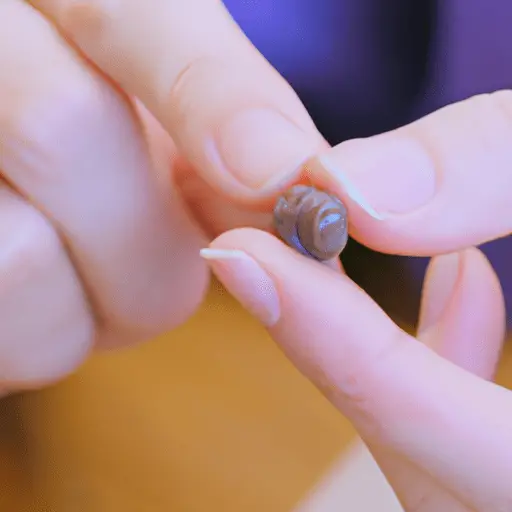Understanding and Treating Flat Warts
-
Table of Contents
- Understanding and Treating Flat Warts
- Key Takeaways
- Introduction: Unveiling the Mystery of Flat Warts
- Understanding Flat Warts: Causes and Symptoms
- Treating Flat Warts: Options and Effectiveness
- Preventing Flat Warts: Strategies and Recommendations
- FAQ Section
- Are flat warts contagious?
- Can flat warts turn into cancer?
- How long do flat warts last?
- Can flat warts come back after treatment?
- Can I treat flat warts at home?
- Conclusion: Demystifying Flat Warts
- Key Takeaways Revisited
Understanding and Treating Flat Warts

[youtubomatic_search]
Key Takeaways
- Flat warts are small, smooth, skin-colored growths caused by the human papillomavirus (HPV).
- They are most common in children and young adults and often appear on the face, arms, or legs.
- While flat warts are generally harmless, they can cause discomfort or embarrassment and may spread if not treated.
- Treatment options include topical medications, cryotherapy, laser therapy, and surgical removal.
- Prevention strategies include good hygiene practices and HPV vaccination.
Introduction: Unveiling the Mystery of Flat Warts
Flat warts, also known as verruca plana, are a common skin condition caused by certain strains of the human papillomavirus (HPV). They are characterized by their small, flat, and smooth appearance and often occur in clusters. This article aims to provide a comprehensive understanding of flat warts, their causes, symptoms, treatment options, and prevention strategies.
Understanding Flat Warts: Causes and Symptoms
Flat warts are caused by HPV, specifically types 3, 10, 28, and 49. The virus enters the body through small cuts or abrasions on the skin, leading to rapid growth of cells on the outer layer of the skin and resulting in warts. They are most common in children and young adults and often appear on the face, arms, or legs.
Flat warts are generally small in size, often less than a quarter of an inch in diameter. They are smoother and flatter than other types of warts and can be pink, light brown, or yellowish in color. While they are usually painless, they can cause itching or discomfort, particularly if they are located on areas of the body that are frequently rubbed or bumped.
Treating Flat Warts: Options and Effectiveness
While flat warts often disappear on their own over time, treatment may be recommended to speed up the process, prevent spreading, or alleviate symptoms. Treatment options include topical medications, cryotherapy, laser therapy, and surgical removal.
Topical medications, such as salicylic acid or retinoids, work by peeling off the wart layer by layer. Cryotherapy involves freezing the wart with liquid nitrogen, causing it to blister and eventually fall off. Laser therapy uses intense light to burn and destroy the wart tissue. Surgical removal, while less common, may be recommended for large or persistent warts.
Preventing Flat Warts: Strategies and Recommendations
Prevention of flat warts primarily involves good hygiene practices and HPV vaccination. Avoiding direct contact with warts, not picking at warts, and keeping the skin clean and dry can help prevent the spread of the virus. The HPV vaccine, which protects against the strains of HPV most likely to cause warts, is recommended for both boys and girls at age 11 or 12.
FAQ Section
Are flat warts contagious?
Yes, flat warts are contagious. They can spread through direct contact with a wart or through contact with objects or surfaces that have been touched by a person with warts.
Can flat warts turn into cancer?
No, flat warts are benign and do not turn into cancer. However, some strains of HPV that cause other types of warts are associated with certain types of cancer.
How long do flat warts last?
Without treatment, flat warts can last for years. With treatment, they often disappear within a few months.
Can flat warts come back after treatment?
Yes, flat warts can come back after treatment, particularly if the underlying HPV infection is not cleared.
Can I treat flat warts at home?
Yes, over-the-counter treatments such as salicylic acid are available for home use. However, it’s always best to consult a healthcare provider before starting any treatment.
Conclusion: Demystifying Flat Warts
Flat warts, while common and generally harmless, can cause discomfort or embarrassment. Understanding their causes, symptoms, treatment options, and prevention strategies can help manage this condition effectively. Remember, while home treatments are available, it’s always best to consult a healthcare provider for appropriate diagnosis and treatment.
Key Takeaways Revisited
- Flat warts are caused by HPV and often appear on the face, arms, or legs.
- They are small, smooth, and skin-colored, and can cause itching or discomfort.
- Treatment options include topical medications, cryotherapy, laser therapy, and surgical removal.
- Good hygiene practices and HPV vaccination can help prevent flat warts.
- While flat warts can be treated at home, it’s always best to consult a healthcare provider.
[youtubomatic_search]


